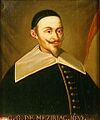Template:Selected anniversaries/February 26: Difference between revisions
No edit summary |
No edit summary |
||
| Line 28: | Line 28: | ||
File:John_Fleming_in_Fleming_tube.jpg|link=John Ambrose Fleming (nonfiction)|1904: Physicist and crime-fighter [[John Ambrose Fleming (nonfiction)|John Ambrose Fleming]] delivers lecture from within Fleming tube. | File:John_Fleming_in_Fleming_tube.jpg|link=John Ambrose Fleming (nonfiction)|1904: Physicist and crime-fighter [[John Ambrose Fleming (nonfiction)|John Ambrose Fleming]] delivers lecture from within Fleming tube. | ||
||1903 | ||1903: Giulio Natta, Italian chemist and academic, Nobel Prize laureate (d. 1979) | ||
||1909 | ||1909: Kinemacolor, the first successful color motion picture process, is first shown to the general public at the Palace Theatre in London. | ||
||1921 | ||1921: Dmitry Yevgenyevich Okhotsimsky born ... aerospace engineer and scientist who was the pioneer of space ballistics in the USSR. He wrote fundamental works in applied celestial mechanics, spaceflight dynamics and robotics. Pic. | ||
|| | ||1926: James Alexander "Sandy" Green born ... mathematician and Professor at the Mathematics Institute at the University of Warwick, who worked in the field of representation theory. Pic: https://alchetron.com/Sandy-Green-(mathematician) | ||
|| | ||1931: Otto Wallach, German chemist and academic, Nobel Prize laureate (b. 1847) | ||
|| | ||1935: Robert Watson-Watt carries out a demonstration near Daventry which leads directly to the development of radar in the United Kingdom. With the aid of a radio station in Daventry, England, and two receiving antennas, Scottish engineer and inventor Robert Watson-Watt first demonstrated the use of radar. | ||
| | ||1936: In the February 26 Incident, young Japanese military officers attempt to stage a coup against the government. | ||
||Ahmed Hassan Zewail | ||1946: Ahmed Hassan Zewail born ... scientist, known as the "father of femtochemistry". He was awarded the 1999 Nobel Prize in Chemistry for his work on femtochemistry. Pic. | ||
||1966 – Apollo program: Launch of AS-201, the first flight of the Saturn IB rocket | ||1966 – Apollo program: Launch of AS-201, the first flight of the Saturn IB rocket | ||
Revision as of 17:15, 25 August 2018
1638: Mathematician and linguist Claude Gaspard Bachet de Méziriac dies. He was the earliest writer who discussed the solution of indeterminate equations by means of continued fractions. He also did work in number theory and found a method of constructing magic squares.
1648: Niels Steensen analyzes fossil trilobite using Gnomon algorithm techniques, finds evidence of crimes against geological constants.
1786: Mathematician and politician François Arago born. He will observe that a rotating plate of copper tends to communicate its motion to a magnetic needle suspended over it, an effect which will later be known as eddy current.
1904: Physicist and crime-fighter John Ambrose Fleming delivers lecture from within Fleming tube.
2005: Computer scientist Jef Raskin dies. He was a human–computer interface expert best known for conceiving and starting the Macintosh project for Apple in the late 1970s.
2017: Steganographic analysis of "Enter or Exit" sequence from Game of Chance unexpectedly reveals "at least a terabyte of encrypted data."





